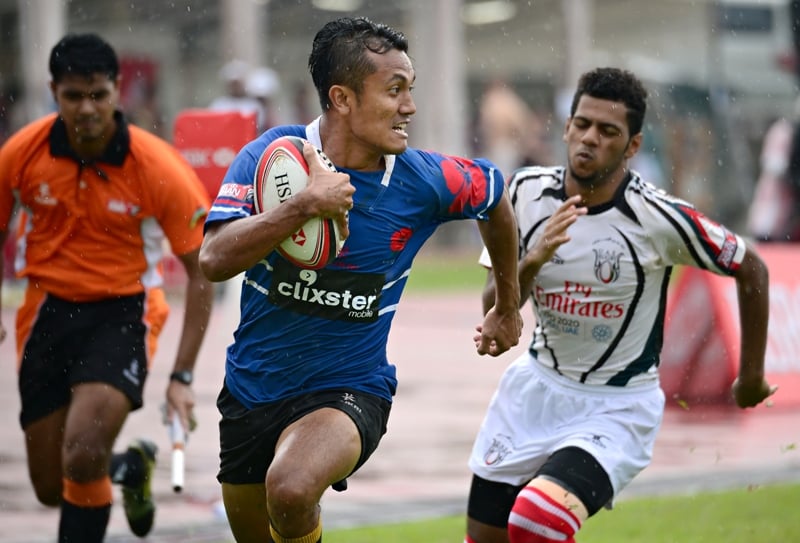Rugby Sevens and 10-a-side

Image credit: Andrew Tan/SportSG
Click here to get your tickets to the HSBC Singapore Rugby Sevens!
Not every game of rugby requires 15 players. Variations of the game, such as the rugby tens and rugby sevens have sprung up so check out the key differences between the three.
Rugby Sevens
Also known as 7-a-side rugby, or Sevens, this version of rugby requires only, as its name suggests, seven players on each team. Games are also much shorter compared to the traditional 15-player rugby with each half lasting just seven minutes (compared to 40 minute-halves), with a one minute break in between.
Rugby sevens is played by a team of three forwards and four backs - with two props and a hooker playing forwards, and a scrum-half, fly-half, center and winger for the backs. Due to playing numbers being halved, sevens players need to be extremely fit and fast to be able to cover the same pitch size. This adds to the excitement and its growing popularity as games are fast paced and high scoring while tournaments can be concluded in just two or three days
In terms of rules, the scrum consist of three forwards on each team, instead of the eight forwards in 15-player rugby, while line outs are usually limited to two players. Other differences from the 15-a-side game are that conversions must be drop kicked, instead of a place kick, and these kicks must take place 40-seconds after a try instead of the full minute in traditional rugby.
Another difference is that the team that scores a try restarts the game and if the restart does not go beyond the required 10 metres then a free-kick is awarded to the non-offending team at the centre of the half way line. In terms of yellow card suspensions, while the sin bin lasts for 10minutes in 15s rugby, in rugby sevens a suspension lasts two minutes.
Rugby Tens
In Rugby Tens or 10-a-side rugby, there are only five forwards and five backs in the side with each half lasting only 10-minutes each. Two props, a hooker and two locks make up the forwards, while the backs consist of a scrum-half, fly-half, centre, winger, and fullback.
Scrums in rugby tens is formed by five players on each team, with two rows instead of eight players in three rows in traditional rugby. As with seven-a-side rugby, the team that manages to score a try restarts the game, and only drop kicks can be used to score a goal. Conversions –as in rugby sevens – must be scored with a drop kick and done within 40-seconds of a try or it will be discounted. Similarly, suspensions also last two minutes instead of the 10-minutes in 15sgame.
This variation has been played for decades in Singapore and remains popular locally, however, unlike rugby sevens, which has soared in popularity across the world – now even featuring in the Commonwealth and Olympic Games - rugby tens is still largely played only in Southeast Asia having been invented in and spread from Malaysia.
To receive the latest updates on the happenings in the Singapore sports scene, or to find out more about some of the latest programmes on offer at ActiveSG, like our Facebook page here.





![ActiveSG Academies and Clubs Logo (Solid Colour)[8647]](https://www.activesgcircle.gov.sg/hs-fs/hubfs/ActiveSG%20Circle%202023Theme/images/ActiveSG%20Academies%20and%20Clubs%20Logo%20(Solid%20Colour)%5B8647%5D.png?width=150&height=65&name=ActiveSG%20Academies%20and%20Clubs%20Logo%20(Solid%20Colour)%5B8647%5D.png)



-01.png?width=200&height=141&name=Team%20Singapore%20Logo%20(Red)-01.png)



